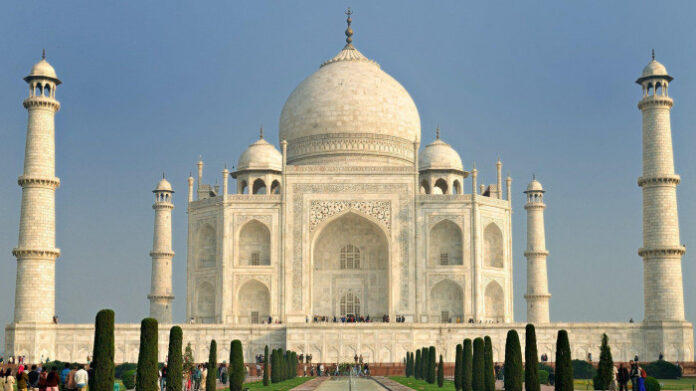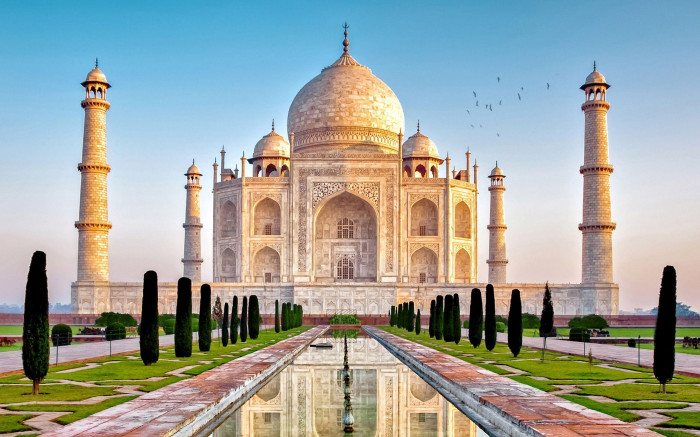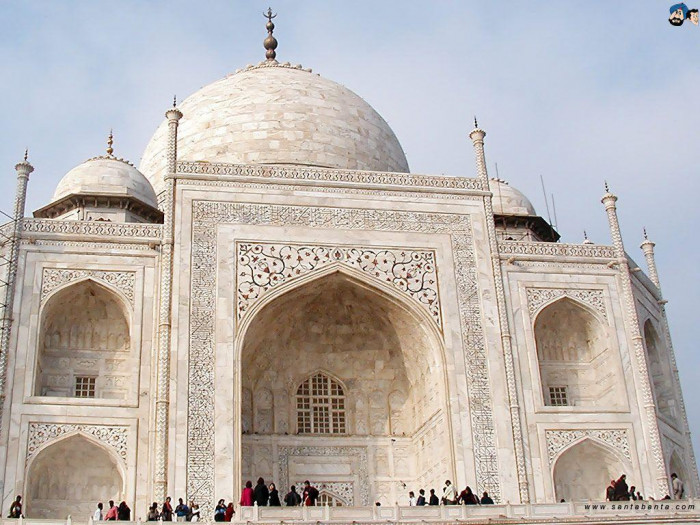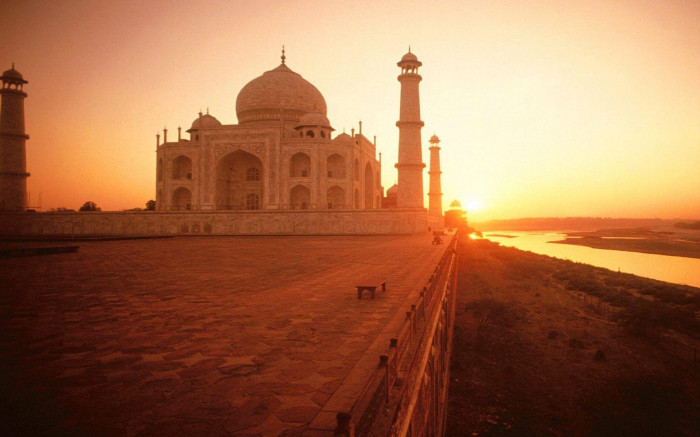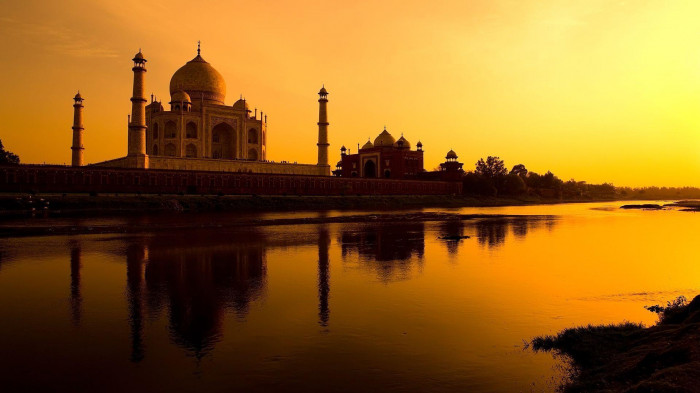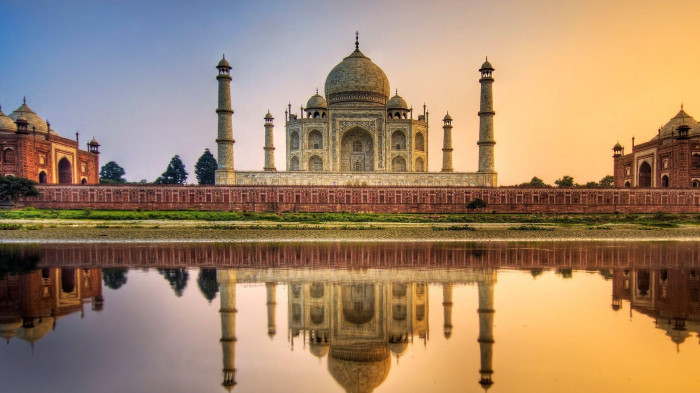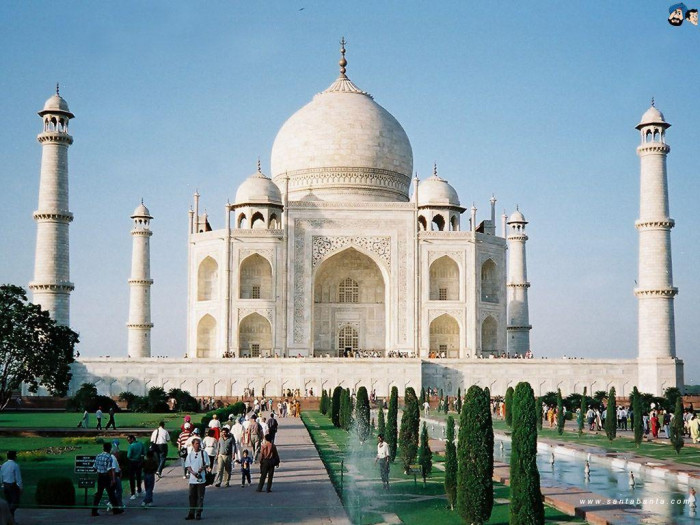The Taj Mahal is one of the most iconic and recognized architectural wonders in the world. Situated in Agra, India, this magnificent monument has captivated the hearts and minds of people from all corners of the globe for centuries. It is a symbol of eternal love, grandeur, and the zenith of Mughal architecture. This article delves into the full story of the Taj Mahal, from its historical origins to its architectural features, cultural significance, and enduring legacy.
Historical Origins:
The history of the Taj Mahal is intimately tied to the Mughal Empire and the love story of Emperor Shah Jahan and his favorite wife, Mumtaz Mahal. The Mughal Empire, which ruled over the Indian subcontinent from the early 16th to the mid-18th century, was known for its opulence, architectural marvels, and significant contributions to the world of art and culture.
Shah Jahan, the fifth Mughal emperor, ascended to the throne in 1628 after a protracted struggle for power within the Mughal court. During his reign, he was known for his interest in architecture and his patronage of the arts. However, one event in his life would overshadow all his other accomplishments – his love for Mumtaz Mahal.
Mumtaz Mahal, whose name means “the jewel of the palace,” was not only a beautiful woman but also a trusted confidante and advisor to Shah Jahan. She was born as Arjumand Banu Begum and married Shah Jahan in 1612. Their love was deep and passionate, and she became the favorite among the emperor’s wives. Mumtaz Mahal bore Shah Jahan 14 children during their marriage, which further solidified their bond.
In 1631, tragedy struck when Mumtaz Mahal died while giving birth to their fourteenth child. Grief-stricken and heartbroken, Shah Jahan vowed to create a monument that would immortalize their love and her memory. This was the birth of the Taj Mahal, a testament to a love story that transcended time.
Architectural Marvel:
The construction of the Taj Mahal began in 1632 and continued for over two decades, with thousands of skilled artisans, craftsmen, and laborers working tirelessly to bring Shah Jahan’s vision to life. The chief architect responsible for the Taj Mahal was Ustad Ahmad Lahori, who combined Persian, Islamic, and Indian architectural styles to create this masterpiece.
The Taj Mahal is built on the southern bank of the Yamuna River, and its central structure is constructed entirely of white marble, which was brought from the nearby town of Makrana. The most striking feature of the Taj Mahal is its perfectly symmetrical design. The main structure is flanked by four minarets, which not only enhance the aesthetic appeal but also serve a structural purpose – they are designed to tilt slightly outward. In the event of an earthquake, this design prevents the minarets from falling onto the main tomb.
The central dome of the Taj Mahal is one of its most iconic features. It stands at a height of 73 meters (240 feet) and is surrounded by four smaller domes, one at each corner of the main building. The central dome is often referred to as the “onion dome” and is adorned with a lotus finial, a traditional Islamic symbol of purity. The entire structure is intricately decorated with delicate calligraphy, floral patterns, and semi-precious stones inlaid into the white marble, creating a breathtaking mosaic of colors and designs.
The main tomb houses the cenotaphs of Mumtaz Mahal and Shah Jahan. The cenotaph of Mumtaz Mahal is placed at the exact center of the building, directly beneath the central dome. Shah Jahan’s cenotaph, while similar in design, is positioned to the west of Mumtaz Mahal’s, as the emperor had originally intended to build a black marble mausoleum for himself, which would have mirrored the Taj Mahal, across the Yamuna River.
Cultural Significance:
The Taj Mahal is more than just a remarkable piece of architecture; it holds profound cultural and historical significance for India and the world. It is a testament to the Mughal Empire’s legacy and the enduring power of love and art.
1. Symbol of Love: The Taj Mahal is often considered the ultimate symbol of love and devotion. It stands as a testament to the eternal love that Shah Jahan had for Mumtaz Mahal. The story of their love, coupled with the grandeur of the monument, has captured the imagination of people worldwide.
2. Architectural Wonder: The Taj Mahal is a masterpiece of Mughal architecture, showcasing a harmonious blend of Persian, Islamic, and Indian styles. Its meticulous design, symmetry, and use of white marble make it a remarkable example of architectural excellence.
3. UNESCO World Heritage Site: In 1983, the Taj Mahal was designated as a UNESCO World Heritage Site, recognizing its cultural and historical importance. This status ensures its protection and preservation for future generations.
4. Tourist Attraction: The Taj Mahal attracts millions of visitors from all over the world every year. It is not only a site of historical and cultural significance but also an essential part of India’s tourism industry, contributing to the country’s economy.
5. Inspiration for Art and Literature: The Taj Mahal has inspired countless artists, poets, writers, and filmmakers. Its timeless beauty and romantic aura have been featured in numerous works of art, literature, and cinema.
6. Cultural Identity: The Taj Mahal is an integral part of India’s cultural identity and is often featured in various forms of media, including currency notes and postage stamps.
Enduring Legacy:
The legacy of the Taj Mahal extends far beyond its physical presence. It has left an indelible mark on the world and continues to inspire and enchant people to this day.
1. Tourism and Economy: The Taj Mahal remains one of the most visited tourist attractions in the world. It draws millions of visitors to Agra each year, contributing significantly to the local and national economy.
2. Architectural Influence: The architectural style of the Taj Mahal has influenced subsequent generations of architects and designers, both in India and around the world. Its elegant design and use of materials have left an enduring impact on the field of architecture.
3. Symbol of India: The Taj Mahal has become a symbol of India, representing the country’s rich cultural heritage and artistic achievements. It often features prominently in promotional materials and advertisements that highlight the country’s tourism and cultural offerings.
4. Love and Romance: The story of Shah Jahan and Mumtaz Mahal continues to inspire people to believe in the power of love and devotion. It serves as a reminder of the enduring nature of deep, meaningful relationships.
5. Preservation and Restoration: Efforts are ongoing to preserve and restore the Taj Mahal, ensuring that it maintains its beauty and structural integrity for future generations. Pollution and environmental factors have posed challenges, but initiatives are in place to protect this iconic monument.
Challenges and Controversies:
While the Taj Mahal is celebrated as a symbol of love and grandeur, it has also faced several challenges and controversies over the years.
1. Environmental Pollution: Agra, where the Taj Mahal is located, has struggled with air pollution, and the white marble of the monument has been gradually yellowing due to environmental pollutants. Efforts have been made to control pollution in the area and protect the Taj Mahal from further damage.
2. Maintenance and Restoration: The preservation of the Taj Mahal requires ongoing maintenance and restoration efforts. These efforts include cleaning, repairing, and protecting the monument from natural wear and tear.
3. Ownership Disputes: In recent years, there have been disputes over the ownership of the Taj Mahal, with some groups claiming that the monument belongs to them. The Indian government has consistently maintained that it is a national heritage site.
4. Visitation and Tourism Management: Managing the immense tourist footfall has been a challenge. Balancing the need to protect the monument while allowing visitors to experience its beauty is an ongoing concern.
Conclusion:
The Taj Mahal stands as a remarkable testament to the power of love, art, and architecture. Its origins lie in the deep love that Emperor Shah Jahan had for his wife Mumtaz Mahal, and it has since become a symbol of eternal love for people worldwide. As a masterpiece of Mughal architecture, it continues to inspire architects, artists, and lovers of beauty. The cultural significance of the Taj Mahal cannot be overstated, and its enduring legacy ensures that it will remain a cherished part of the world’s cultural heritage for generations to come. Despite the challenges it faces, the Taj Mahal remains a symbol of timeless beauty and a reminder of the profound capacity of human creativity and devotion.
also read :
Why Taj Mahal was built ? Here are the primary reasons!!
Taj Mahal : తాజ్ మహల్ చరిత్ర, మీరు తెలుసుకోవలసిన అత్యద్భుత నిర్మాణ విశేషాలు

